While solid web design is crucial to a positive user experience, the images and graphics you use in that design are just as important. People are visual creatures, especially when they're browsing the internet. Carefully chosen photos are essential to connecting with and making your customers feel comfortable on your website.
Aside from being a basic web design principle, there are more reasons you want to ensure you have relevant, high-quality images on your website. These design elements are crucial for a solid user experience. (Pro tip: Make sure they are properly sized for responsive design purposes.)

One of the pillars of storytelling is "show, not tell." While this traditionally has been used to encourage writers to use description better, it has a more literal meaning in web design. Your website should "show" through pictures whenever possible.
Words will always be important, especially for conveying any necessary information. But that doesn't mean that people want to be inundated with text when they visit your website. Visual information is not only nicer to look at, it's also easier to process.

Creating an emotional response with your visual elements is a great way to connect with internet users and engage them in your content. Showing how your product solves a problem, creates a difference, or just makes life a little easier is more persuasive than just telling them about how life-changing your product or service can be.

Which is more likely to connect with you: a pool builder telling you about their high-end service or pictures of their amazing builds? A company telling you that their candles are modern and fit in with any decor or pictures showing their candles in use? If you design custom phone cases, your word will not go far unless you can actually show how a specific case looks on a specific smartphone model. Having product photos prominently displayed on your website allows users to easily imagine your product in their space, making them that much more likely to buy.
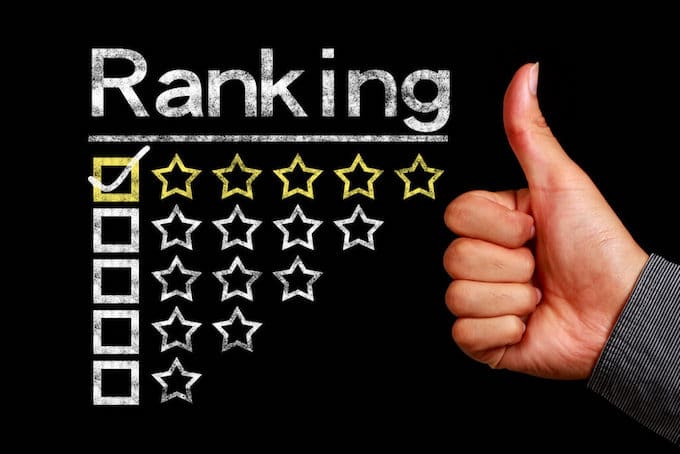
When you optimize your images with search-friendly metadata and captions creates more content for search engines to index. This metadata and caption information essentially doubles the opportunity for users to find your website through both web searchers and image searches. It's important to ensure your alt tags and titles describe your image and relate to page content to take full advantage of this SEO boost.

The best way to snag attention on a crowded social media platform: great photos. Photos and videos are the ultimate scroll-stopper. Studies show that social media posts with images have higher engagement rates than those with just text. Using the same high-quality photos on your website and in your social content is a great way to bring continuity to these two and increase your online presence.
There are some no-brainers when it comes to choosing photos or graphics to use on your website. You want them to be crisp and clear. You want them to be relevant. You want them to reinforce your brand's color palette. You want them to be sized so that they load quickly, especially for responsive design purposes.

People like to see other people on your website. Bonus points if they are your actual staff or customers. Prominently showcasing real people interacting with your business and product makes your content more relatable to your customers. They want to feel like there's a human element to your website, not just a page of code trying to tell them what they want to hear in order to make a sale.

As important as images are, you need to pick images with a purpose, not just to fill white space or because we're telling you that you need them. The pictures you choose should either show relevant information, prove a point you talk about elsewhere, or convey a feeling that supports your message. When picking images, there are two important questions to ask yourself:
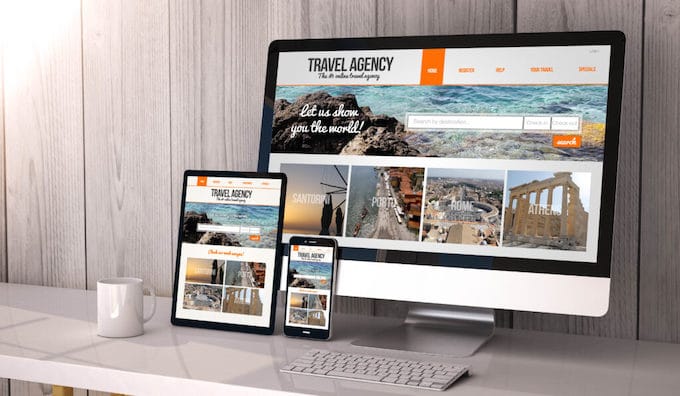
Banner and background images are a great way to fill white space while creating a unique atmosphere on your website and giving your visitors an immediate idea of what your website is about. It's important to take extra care when using background images because they can make your website feel messy. So test those background images with a test audience before launching them.
Adding a personal touch to your website is easy when you customize your photos. Background images are a great way to express yourself and create a unique atmosphere for your visitors. With a little extra care, you can make sure your background images add to the overall design of your website without making it feel cluttered.
Images can support your brand, engage your users, and effectively promote your content throughout your digital properties. Businesses that effectively use images on their website and marketing pieces have a leg up on businesses that struggle to find and use engaging images. Now's a great time to do an audit of the images on your site to see if they're supporting your brand or taking away from the overall user experience.
Color can signal many things. Blue can make people feel reassured. Green can make people feel calm. Purple shows creativity. Gray shows sophistication. Orange, red, and yellow convey energy and warmth.
Color is a tool you can use to start building your brand's image in a website visitor's mind before they read even a single word of your copy. Choosing the right colors and color scheme for your website gives you the opportunity to hook your customers from the moment the screen finishes loading.
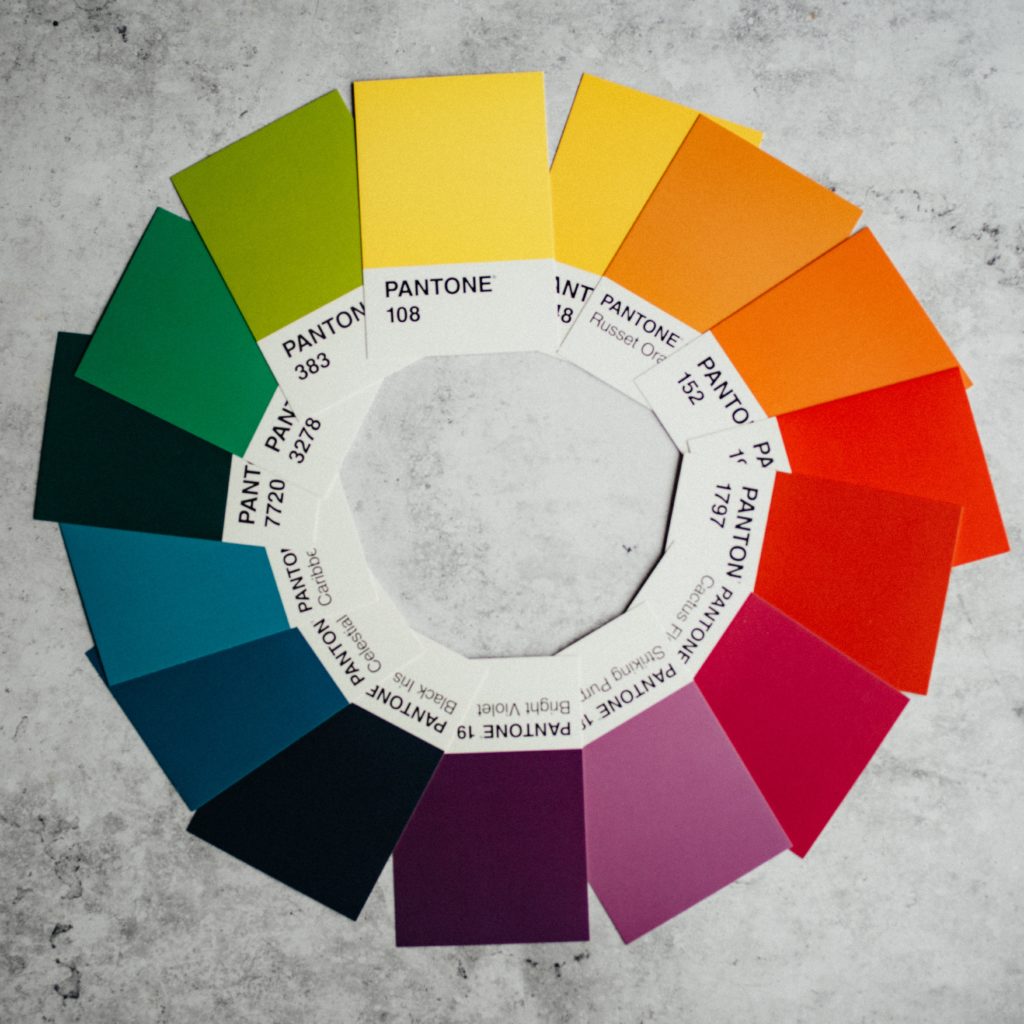
The collection of colors you choose for your website design is known as a "color scheme." These color choices can also be known as a "color palette." While color schemes and color palettes include more than one color, there is no cap to the number of colors that can be included.
(However, this is definitely a field where less is usually more. Potential customers can easily be overwhelmed by too many colors and will quickly move on to your competitors if they do not like the look of your website.)
The great thing about the colors you choose is that they can be used repeatedly for a variety of elements throughout your site. Not every element has to be a different color. That said, color schemes are usually divided into two sets: primary and secondary.
In this case, the term "primary colors" isn't talking about red, yellow, and blue. It's talking about the main colors that will be used for your site's background colors, logo colors, menu colors, and other dominant page elements. "Secondary colors" refers to the set of colors that are used as accent colors throughout the site.
When creating a color palette for your business website, it's important that it remains consistent across the site. This will help to reinforce your brand personality, something we talk about in our Blueprint for Online Excellence. Using the same colors over and over again helps to create associations and reinforce expectations between your brand and your audience.
What is the first thing you notice when a website finishes loading? Odds are it isn't the copy because, as powerful as copy is, it takes more than a millisecond for our brains to process the words we read. The first thing you notice when a website loads is color.
Studies have shown over and over that color has a major impact on how we feel and can influence how we think about a particular product, company, or brand.
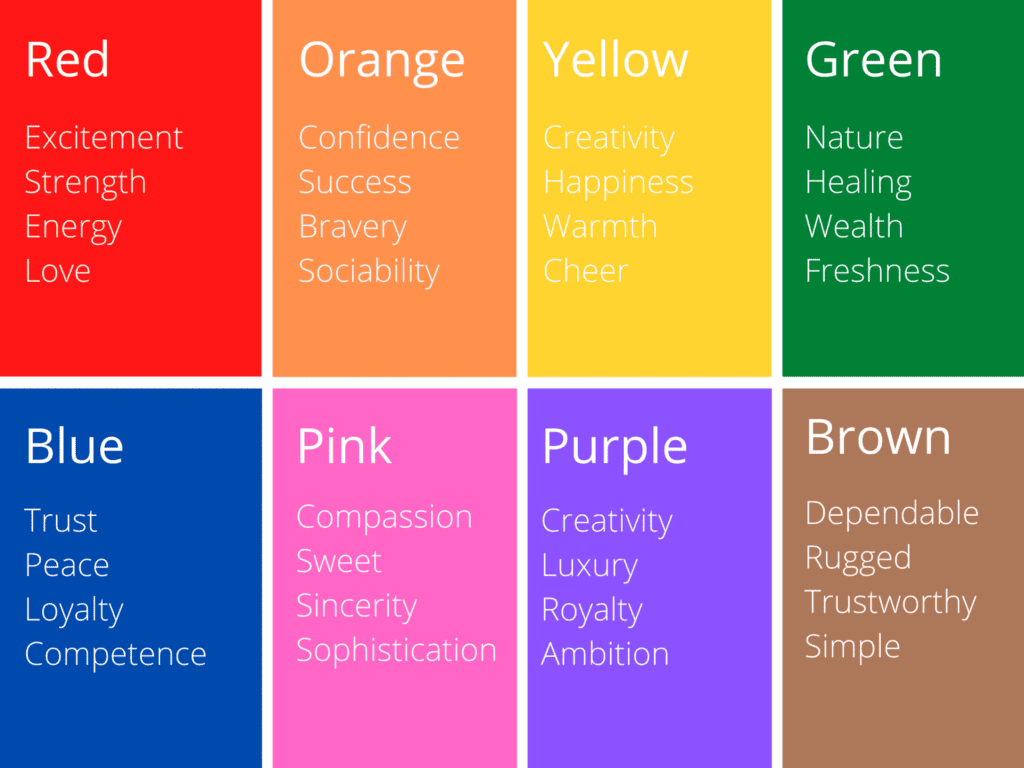
But what does this mean for your website designs?
Research from the University of Winnipeg found two important things related to website color schemes:
Understanding color psychology and how your color palette impacts your visitors can lead to better website designs and visitors spending more time on your page leading to more leads.
Simple color schemes are more popular than ever. With more and more people using their mobile devices for web browsing, keeping colors simple but impactful is the best bet for resonating with your target audience.
Simple neutrals with bright text
Gray is seen as sophisticated. Muted earth tones are seen as grounded and calm. But if your palette is limited to those colors, some people can see it as boring. Adding in a bright, primary color as an accent color in your text is a way to direct attention to important elements while not overwhelming them with color.
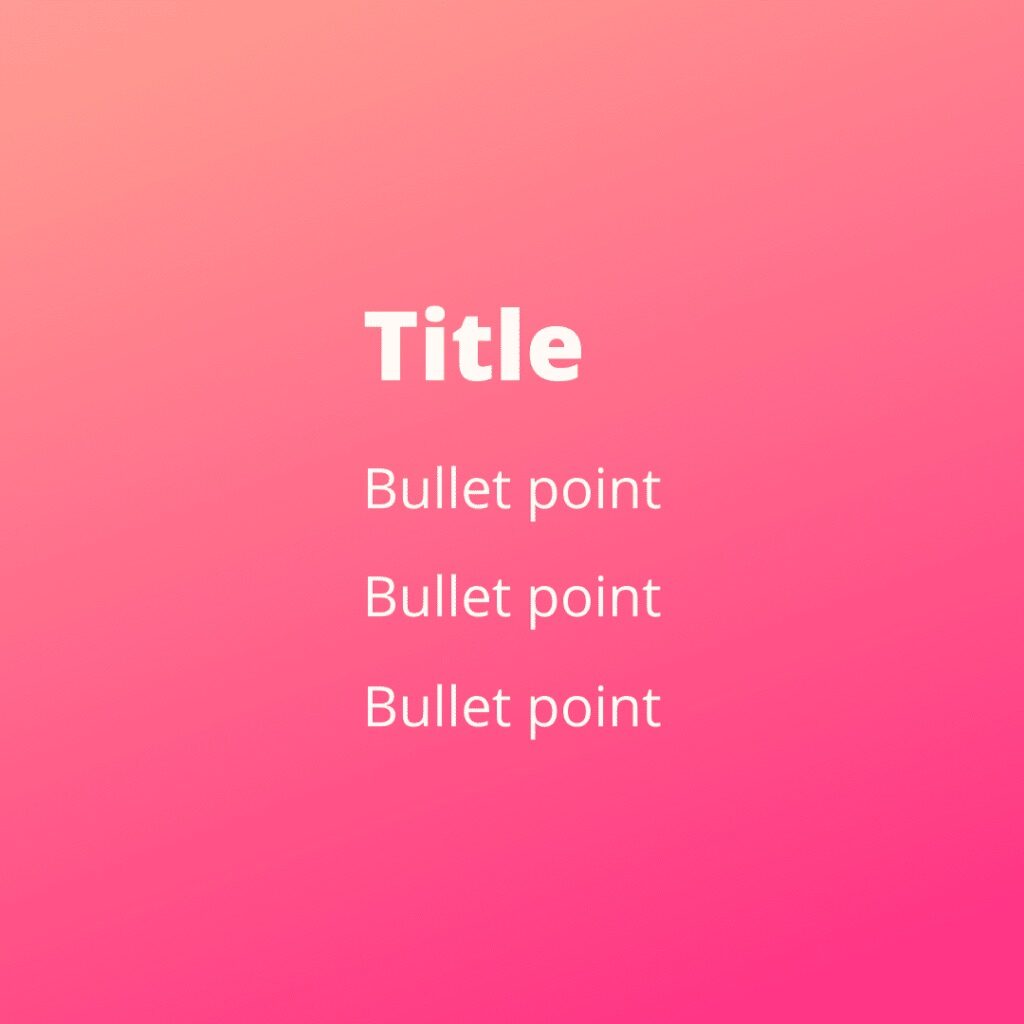
Color gradients with white text
Not every palette has to have multiple colors. Monochromatic color schemes can be just as powerful, especially if you use color gradients. Blending one main color creates a dynamic background that allows your text to jump off the page. It creates more texture in the background and makes your website much more interesting to look at for visitors.

Throwback tones
Everything old is new again, at least when it comes to popular color palettes. Designs that incorporate the neons from the '80s, rusty earth tones from the '70s, or the pop-art-inspired colors of the '90s are resonating with more people than ever before, especially if they are done in a modern way.
Adding in modern elements like color gradients or fading the colors to pastels is a great way to update these palettes for a more modern audience.

Muted tones with a bold color accent
Website visitors respond well to designs that incorporate muted tones and neutrals. They're easy on the eyes and make it easy to read any text. But designers can also effectively use a bright and bold primary color in these color schemes to draw attention to important elements like buy now buttons or contact forms.

Shades of a primary color accented by its complement
Using more than one shade of your palette's primary color is a great way to get a lot of mileage out of one color that may have meaning to your business. When you use a complementary color, you get a great contrast in your designs that draws the eye and looks great.
So how do you choose what colors you or your designers should use in your website designs? Not to sound glib, but there are just two steps.
1. Choose your primary colors.
The primary or dominant color in your website color palette is the anchor for your brand and should evoke the emotions you want your customers to associate with your brand. If you've already made a logo, the color that stands out the most should be the primary color for your website.
If you haven't made a logo yet, see the color psychology graphic above and use it when you think about what you want your customers to associate with your brand.
2. Choose your secondary colors.
This is the part where color theory comes into play. Color theory is what you learned in elementary school art class about how colors relate to one another on the color wheel. Designers use color theory to create designs that resonate with your audience. Here are the four most common color schemes:
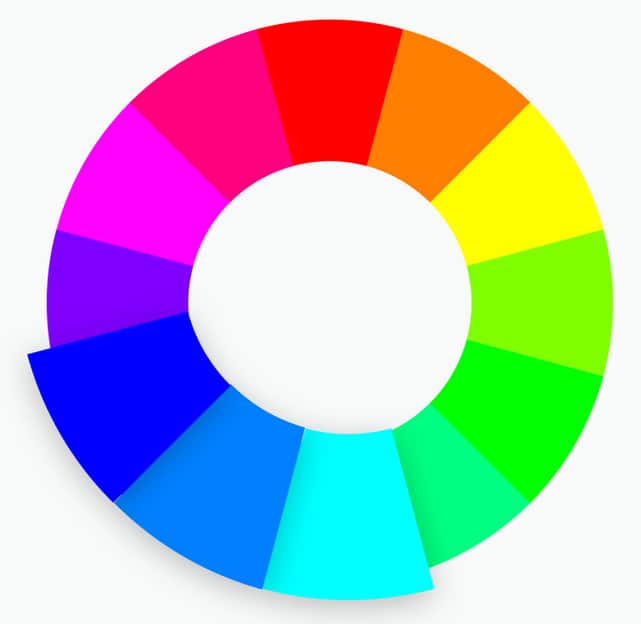
Analogous Color Schemes: Analogous color schemes use colors that are next to each other on the color wheel. These color combinations evoke a sense of harmony but it's important to choose just one shade as a primary color and use the others as accents.
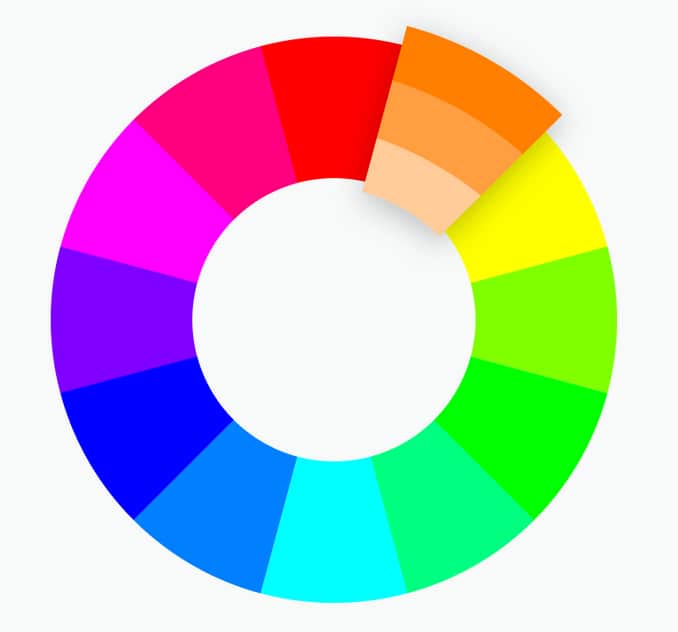
Monochromatic Color Schemes: As mentioned before, these color schemes only use one color or shades of one color. Using just one color can make it harder to evoke an emotional response but it does communicate authority and stability.
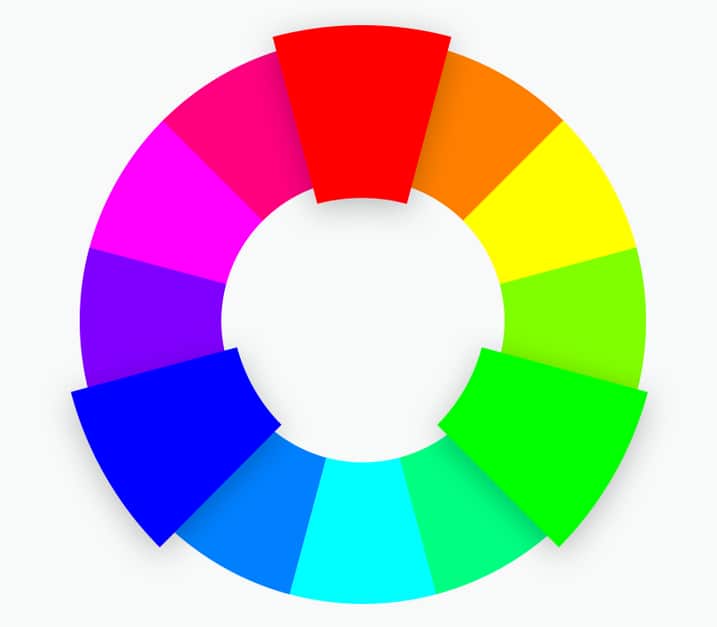
Triadic Color Schemes: Where monochromatic color schemes use one color, triadic color schemes use three that are evenly spaced around the color wheel (think orange, green, and purple). These tend to be bold, dynamic color schemes, even if you use pale or unsaturated versions of the colors.
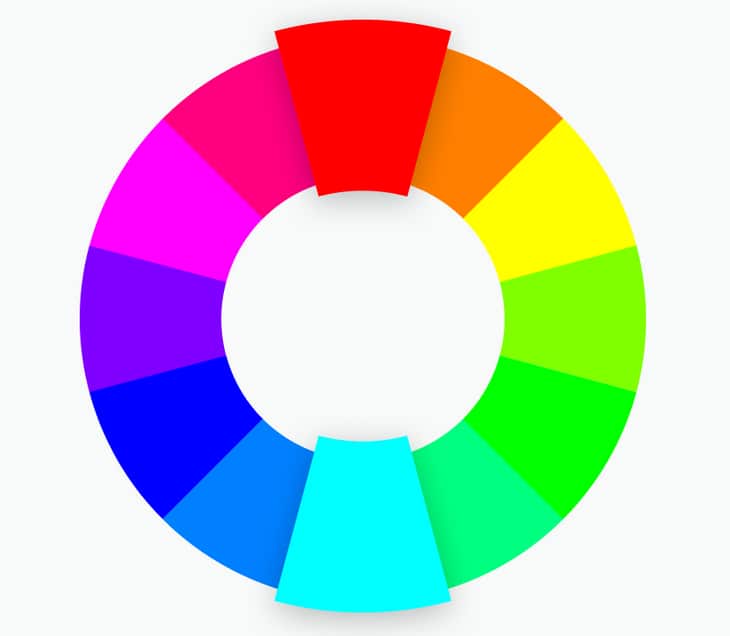
Complementary Color Schemes: Complementary colors are those that are opposite one another on the color wheel. These color combinations can be very attention-grabbing, but also jarring and unpleasant for the viewer. Use them carefully.
If you need a little help narrowing down colors in these general color schemes, Canva has a great tool that can help you find the perfect colors for the kind of color scheme you want.
Your website can say just as much with color as it can with text. It's important to choose your website colors carefully so you end up with beautiful color schemes and not a generic or chaotic mess that turns off your viewers. CanvaPro is a great tool with lots of designer-approved color palettes you can use as-is or just as inspiration. If you need more help, we can work with you to find the exact right color scheme for your brand, your business, and your website.
—
Thrive Design is a customer-centric web design company from Seattle. Contact us today to find out how we can elevate your business online! Find us on Clutch, UpCity, LinkedIn, Facebook, and Twitter.
When I'm working with clients, I use the same framework for establishing online dominance that I have used for my own business. These nine elements haven't steered me wrong in the many years that I have been building websites for businesses.
The first element that I tackle with all my clients is brand identity. A strong brand identity makes you more memorable, makes your marketing more cohesive, and gives your customers something to relate with.

Let’s start with the basics. A strong brand identity is more than a logo. Brand identity encompasses the look and feel of your website. It's how you talk about your business. It's what first comes to your target audience's mind when they hear the name of your business.
Here's an exercise to help you understand more about what is involved with a brand. First, close your eyes and think about Wal-Mart and note the things that you think about. Do you think about the low costs, the colors blue and yellow, a bouncing smiley face or sun icon (depending on how old you are)?
Next, close your eyes and think about Target. Do you think about different things? Maybe quality products, the color red, a small dog, or their collaborations with famous designers or brands?
At the basic level, Wal-Mart and Target are the same store. They are both one-stop-shops for all of your needs. Many have groceries in addition to clothing, home goods, electronics, toys, and sports equipment. They both have seasonal sections where you can get Halloween costumes, pool toys, or Christmas decorations depending on the time of year.
But when you think of each of these stores, you probably thought of very different things. That's because they each have a very specific and very strong brand identity. While a logo or tagline may have also crossed your mind, most of what you thought about probably had nothing to do with either of those. That's because brand identity encompasses more than just a logo or tagline.
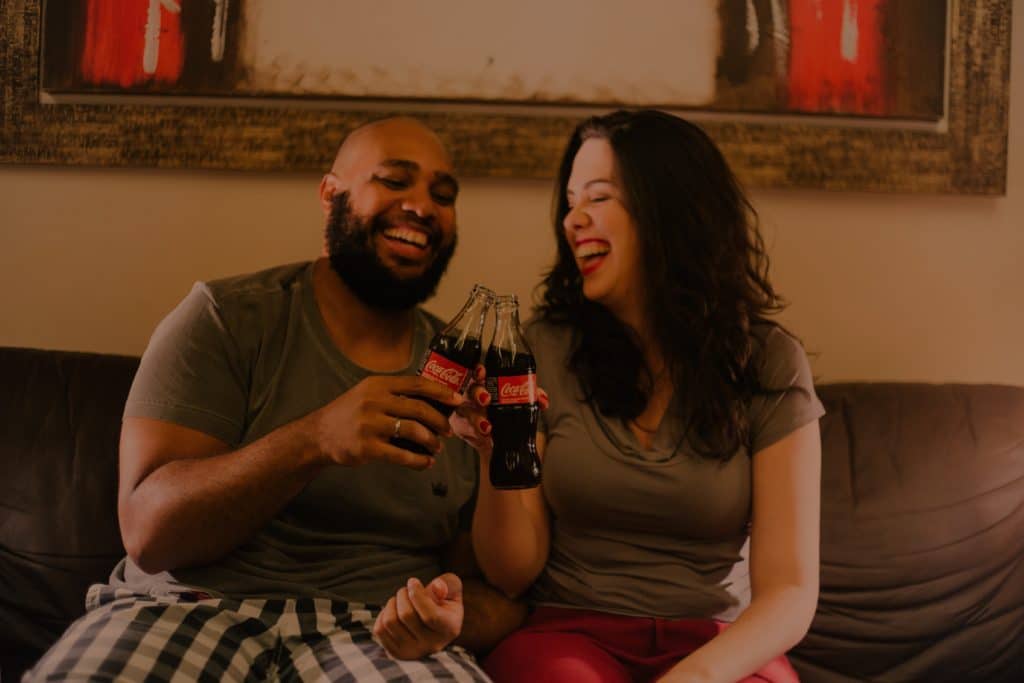
Featured Reading: Data-Driven Results: Step 5 of 9 for Dominating Online
Brand identity is a powerful tool you can use to differentiate yourself from your competitors. It's another way you can show yourself to be different from all of the other painters, real estate agents, pool companies, dentists, or whatever business you find yourself in.
A brand gives your company an identity beyond your product or services. Your customers want to do business with a company that isn't just a “dentist” or a “real estate agent.” They want a “family dentist” or a “holistic dentist.” They want a “friendly real estate agent” or a “knowledgeable real estate agent.” Branding gives your customers something to connect with, which makes them feel like they know your business better.
A strong, consistent brand helps you with your marketing and advertising activities. When you have a consistent brand that your audience recognizes and connects with, it gives everything else your company does an extra impact.
A brand makes your company more memorable. When you give your company an identity that your customers connect with, they are more likely to remember you over your competition. They are also more likely to do business with a brand they recognize and identify with.
A strong brand will help you build your business above and beyond where you are now. It will give everything you do more impact and help your customers distinguish you from your competitors in an often crowded marketplace.

The great thing about branding is that you can control these impressions that your business gives to your customers. Everything from the colors you choose, the logo you design, the words you use, and the look and feel of your website can help mold your customers' impressions of your business.
Here are the five things you need to think about when designing your brand:
One of the biggest misconceptions about branding is that your brand is about you and your business. Your brand is FOR your business but it should be ABOUT your audience. They are the ones who interact with your brand on a daily basis. They are the ones you are trying to attract with your brand.
Every decision you make about your brand should be true to your business, yes. But it also needs to be designed to appeal to your audience. If your audience is families with young children, your brand should be bright and cheery even if you prefer muted colors and simple images.
Your mission statement is all about the purpose of your business. It's the statement of why you started your business. You cannot create a brand that people will trust, value, and identify with if you cannot tell them why your business exists or why you're passionate about your business.
Another aspect of your business that needs to be conveyed through your brand is how you are different from your competitors. How does your business improve the lives of your customers? What sets you apart from the other businesses in your field?
Once you have an idea of why your business exists and how it's different from your competitors, the fun starts. Now is the time to figure out how all of this should be conveyed visually through your logo, colors, brand images, colors, and fonts.
If you are uncomfortable with this step, graphic designers can help you zero in on the right look for your brand. They are experts who know how to convey feelings and concepts with images and colors.
The final step is figuring out what you want your brand to sound like. This is called your brand voice.
Do you want a brand voice that is more casual and conversational? Do you want a brand voice that's authoritative and professional? Your target audience, UVP, and mission statement will all point towards the voice that will resonate most with your potential customers.
Once you have determined what you want your brand voice to be, it's very important that it remains consistent. Your customers will become accustomed to your brand voice and, if you deviate from it, it won't resonate as much or as well.
Featured Reading: The Killer Offer: Step 6 of 9 for Dominating Online
Establishing a strong, recognizable brand is the first step to dominating online. Your brand is something that can give you an edge by giving your potential customers a way to understand your business on what feels like a personal level. It gives them something to identify with and a way to differentiate you from your competitors.
For more ways to dominate online, check out our Blueprint for Online Excellence for more strategies to help you increase your online presence and effectiveness.
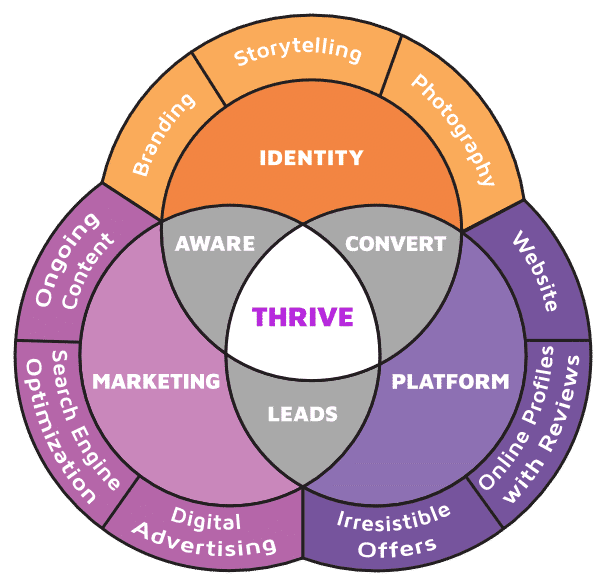
—
Thrive Design is a customer-centric web design and marketing company from Seattle. Contact us today to find out how we can elevate your business online! Find us on Clutch, UpCity, LinkedIn, Facebook, and Twitter.
A brand identity is not a logo.
A brand identity is not a slogan.
A brand identity encapsulates who you are as a company. It is the entire method that you use to convey your business and your story to the world. A great brand identity allows your customers to recognize you instantly.
Building your brand identity doesn’t have to be an overwhelming process. In fact, it only takes five steps to build the necessary groundwork for a unique, powerful brand identity.

Don’t jump straight into creating a logo. As tempting as that can be, it will end with a brand identity that is hollow and doesn’t resonate with your consumer.
You need to understand the ins and outs of your brand. A good plan will bring consistency to your brand so your audience can recognize your brand wherever they encounter it.
When you’re thinking about your branding strategy, here are six areas you need to consider:
Featured Reading: Branding, Website Creation, Marketing: The Right Order

People that connect with your story, as well as your products, will become powerful brand advocates for your company. These are the people that will send referrals your way and be a repeat purchaser.
An authentic story that customers can connect to is a great way to differentiate yourself from your competitors. But, how do you tell your story on places other than the obvious “About Us” page?
This is where your other key elements from your brand’s story can come into play. Your logo, graphics, copywriting, website, color palette, and more can all serve to underscore your business’s story.

Here’s some blunt advice: don’t make your brand about you. Make your brand about your audience.
Your audience doesn’t care about YOUR favorite colors. They care about THEIR favorite colors. They don’t care about how your branding makes YOU feel. They care about how your branding makes THEM feel.
When you're developing your brand identity, you need to know these things about your audience:
This information will help you craft a brand that resonates strongly with your target audience.

This is where most people want to start building their brand identity. Those people have it backward. This should be one of the last things you do.
But this is the fun part. We will admit that. Now is when you get to think about your logo, color scheme, fonts, and graphics.
Whatever you choose, continuity is key with your visual branding. Good branding can capture your customer's eye immediately. Bad branding can turn them away in a split second and send them straight to your competitors.
Featured Reading: Your Website has 15-30 Seconds to Impress
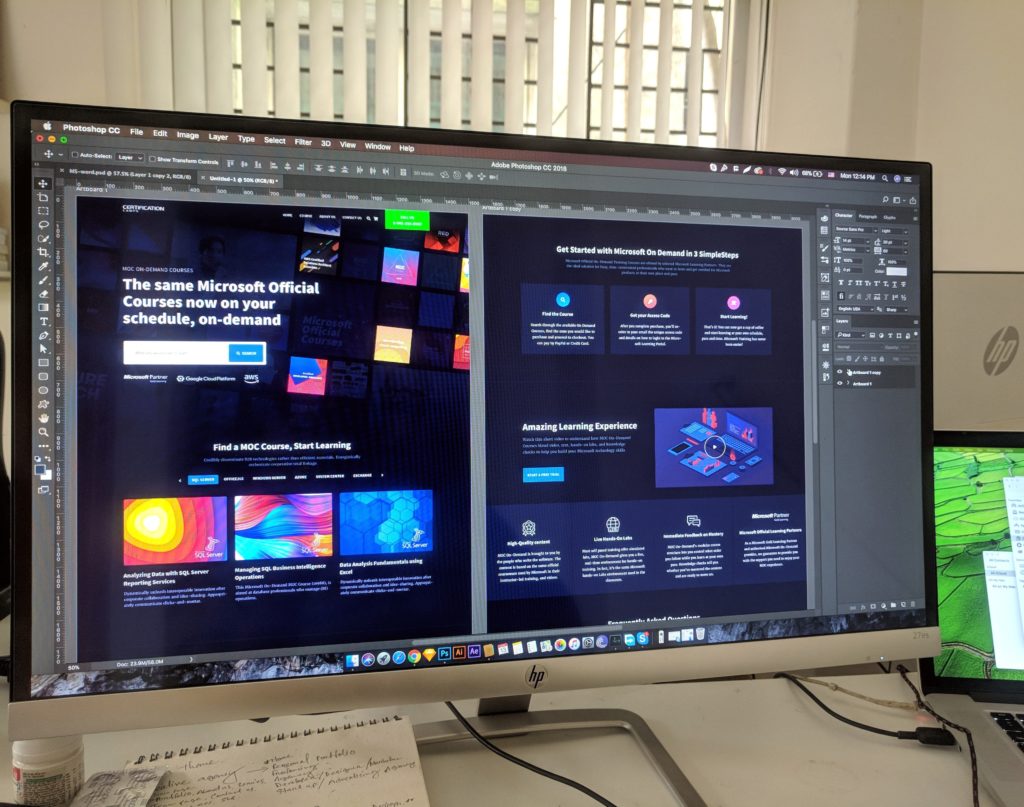
If you haven’t heard of a style guide before, think of it as the user manual for your brand identity. Your style guide lays out all of the decisions you made in steps 1-4 so anyone else can effectively create on-brand pieces for your company.
A well-written style guide ensures that there is a consistent message and tone to everything created for your business. This can include website updates, blog posts, social media content, print adverts, and even retail store design.
Your style guide should include:
Brand identity covers a lot more than imagery. Telling the story of your business goes beyond an attractive logo and color palette.
Following these five steps will help ensure that your brand is strong, memorable, and connects with your target audience. It ensures that your brand will be clear, consistent, and easy for others to implement when they do work for you. It ensures that you will stand out in a crowded marketplace.
—
Thrive Design is a customer-centric web design and marketing agency from Seattle. Contact us today to find out how we can elevate your business online! Find us on Clutch, UpCity, LinkedIn, Facebook, and Twitter.
These days, it’s not enough to just have a functioning website. Your website also needs to be beautiful. Why’s that? For one reason, 75% of users make judgments about a business’s credibility based on visual design alone. A poorly designed website is, unfortunately, an easy way to lose potential customers. As a small business owner, it can seem daunting, and expensive, to undertake a website redesign. But it is one of the biggest things you can do to improve your customer’s experience, increase lead generation, and up your bottom line.

Ask anyone what good design is and, odds are, you will hear similar answers. We may all have different ideas of what is beautiful, but we surprisingly all agree on what makes a good website design.
Users want to be able to USE your website. Research shows that 86% of your website visitors want to see product or service information, 65% look for contact information, and 52% seek an About page for your business. Good website design ensures that users can find what they’re looking for quickly. Good design also alters people’s perceptions of usability. So even if your website is laid out perfectly for your customers, they will not find interacting with it enjoyable if they don’t enjoy looking at it -- and you can start by using easy to read design fonts.
Navigation refers to the way that users get around your website. Website navigation that requires users to actively look for the information they need is a quick way to drive visitors away from your site. Your site’s navigation should be easy to figure out and should lead users to the information they need to purchase your company’s products and/or services.
The content and visual elements of your website are also important. There should be a good balance between text and pictures on your site. Visitors will not want to wade through a site that’s all text, nor will they want to spend time on a site that’s all pictures and no information. Your content should also be easy to read and engaging to keep visitors’ attention.
See Related: What Is A Lightbox?
Your company will have a brand identity, whether you try and create one or not. Customers will always want to associate your company with something: a color, a feeling, an experience. It’s in your best interest to try and dictate what that is and strong website branding can do just that. While it begins with a logo, branding elements can be pulled throughout your website, like the theme of a book. From color choice to word choice to the images you use, it all can strengthen your brand and the things your customers associate with you.
Once you have a well-designed website, it’s important that people can find it through search. Search Engine Optimization (SEO) is the key to that. By incorporating keywords and phrases throughout the text and image descriptions of your website, the crawlers from Google, Yahoo, Bing, and others know what your website is selling and can accurately list it in search results.

Once your website is set up to be beautiful and functional, you may be wondering how exactly this redesign is going to improve your business. There are two main areas where you will see a measurable increase: conversion and search engine rankings.
Related: Web Design vs Web Development
Good design leads your users to where you want them to go. If you want them to check out your new products, your web design can guide them right to them. If you want to lead them to a lead generating trial offer, good design will highlight it and all of the benefits of the trial. Your web design can be tweaked to highlight special offers, calls to action, and help users identify buttons and clickable elements.
By guiding users where you want them to go, you aren’t leaving anything to chance. You aren’t relying on the strength of your product to spur your visitors to action. Good design will support a strong product by making it easier for visitors to make the decision to purchase because they won’t have to search your site to figure it out. The more time visitors have to spend figuring out how to take the action you want them to, the longer they have to talk themselves out of taking that action.
Your search engine ranking is dependent on more than just how well optimized your site is with regard to SEO. A critical element in Google search rankings is page load speed. A well-designed website won’t be burdened with tons of extra code that slows down the page’s load speed. The same goes for large images. Large images load slower than optimized images, negatively impacting your search engine rankings and user experience.
Research shows that the better a website is ranked, the more visitors they get and the more people trust them as an expert in the field. This is especially true for local searches (searches from people in your area looking for a local business). Local search is a huge profit driver for small businesses and a great search engine ranking will ensure your website is finding the eyes of people ready to buy.
Your website is the most powerful tool in your online toolkit so it’s important to make sure that it is as effective as it can be. That’s where great web design comes in. A great website makes a powerful first impression that can convert visitors to customers. We can help make sure that your website has a sleek, powerful design that enhances your brand and works as hard as you do.
See Related: How To Select The Right Web Developer
—
Thrive Design is a customer-centric web design and development agency from Seattle. Contact us today to find out how we can elevate your business online! Find us on Clutch, UpCity, LinkedIn, Facebook, and Twitter.
Category: Web design seattle
Many small businesses, even established ones, don’t know where to start when it comes to branding, website creation, and marketing. They do not have an internal department to handle these activities nor the time/knowledge to do it themselves.
The purpose of this article is to define Branding, Web Design, and Marketing and to put them in the correct order in which they need to be performed.
In fact, let’s do that right from the start.
If you want to be successful with your business understanding the roles of branding, website creation, and marketing is essential.
The first thing you need to do is establish a brand for your company.
Whenever you think of a company or a product, its name, logo, packaging, slogans, spokespeople, and identity are the first few things that will come to your mind. These things are collectively called the branding of a company, business, or product.
Ideally, your branding has been created so that anyone interacting with your brand feels certain emotions.
For example, if you are creating branding for your plumbing company it would be a good idea to elicit competence, trustworthiness, security, and reliability. After all, if you had a broken pipe you want someone who makes you feel secure and that they are reliable, trustworthy, and will get the job done.
Be warned, your company is going to fall on its face if it does not live up to your branding. Solid branding can not make up for breaking the promise of your brand.
Branding starts with your company name, slogan, colors, fonts, and logo.
Branding is the baseline for your website’s design and the first step in having your target audience be aware of who you are. If done correctly, it will help people distinguish you from the other similar companies and products by highlighting your services and presenting you in a positive light.
Successful branding presents your company as a better option than your competitors by promoting your best features. It builds your reputation among the targeted audience and dwells in their subconscious.
If you want to be successful online you must invest in your company or product's branding.
Following are the few things that will tell you why branding is the first step in the service order for your company:
A company without a reputation and characteristics features to promote will find it challenging to earn recognition for itself. There must be a name, a logo, a motto that is pushed through publications and advertising to make you stand out among the masses.
It is recommended to make your company’s logo easy to remember, and its name easy to roll off people's tongues. It should be something that should stick within the minds of the targeted audience.
We recommend testing a company’s name with your target audience. There are basic questions you can ask to make sure they are not confused about what you do and to make sure they can remember it after only a few mentions.
Impactful branding makes people aware of your company’s services at a glance. The more people are aware of your services and products; the more likely they are to lean into the sense of familiarity at times of need.
There is a sense of dependability that can be established once people are aware of what your company represents.
A well-thought and elaborate branding strategy present your company and product as trustworthy in the marketplace.
The more professional you appear in front of your potential customers, the more likely they are to trust your company and services.
Branding your company and product will help you advertise or market it better in front of the audience. You will have a logo or name that you can use in your marketing campaigns and promotional material to spread awareness and build trust among the audience.
Most advertisements follow a specific color theme or target people from a particular background to promote their services, and all of that is predetermined by branding.
If you decide to skip or invest too little in branding your company, brand or product, the next two steps in your process Website Creation and Marketing will be drastically hindered. You won’t be able to establish trust between you and your potential customers as people will find it hard to rely on a nameless brand.
Without branding, people won’t know what to expect from your company and product. They also won't understand why they should choose you over your competitors that- unlike you -have invested in a professional branding strategy.
Branding is an effective way to tell people who you are, what you stand for, and what you want to promote as a company. It reveals your company’s immediate intentions as well as long term goals to let your audience know where you are headed as a business.
Without branding, you will find it hard to devise an effective marketing strategy as well as the theme of your website.
For the last 10+ years, almost every company that has wanted to thrive needed their brand online in order to be successful.
Once you brand your company, the next order of services should be the creation of its website. If you skip this step, then you are bound to lose business opportunities and potential customers.
A website is a 24/7 sales tool. It helps your business grow by making your company or product’s information easily accessible to the audience all around the world.
A professionally designed website with messaging that speaks to your targeted audience can bring in major business. The problem most companies run into is they don’t invest in a website that actually converts. They cut corners everywhere and then wonder why the leads are pouring in.
The website extends your branding and it is the place where many users make their final decision whether to reach out to you.
90% of people do research online before hiring a company. Your website allows them to make sure your services match up with exactly what they need. You need to showcase your best portfolio of services and products with professional copywriting and a design that compels the user to act.
Your company's logo, name, and messaging all determine how you want the world to perceive you. After branding, your website is the advocate of your image and must present only the best version of you.
Even if you skip branding, you'll have to brand your website by creating a logo, name, and design for marketing purposes.
You might be short on funds and want to skip the process of branding, but sooner or later, you'll have to consider branding your company, business or product. It might be hard to digest, but there is no way of marketing your business without branding it first.
As stated earlier, branding determines who you are and who you will be serving with your services in easy to grasp concepts and words. If a prospect can’t find the answers to their basic questions regarding your services, then your investment in branding and website creation all mounts to null.
After all why send people to a website that does not convert? You will only be wasting your money on your halfhearted efforts.
This is where most companies fail. They hire companies that are very inexpensive that don’t spend the time or don’t have the skills to properly brand your company and create a website.
And then… they fail to market it at all.
Marketing through promotional materials and advertising is the final step. Many people will mistake marketing with branding and vice versa, but there is a significant difference between the two.
Branding initially is a brand's identity, and marketing is when that identity is used to spread awareness about a company or product via different tools of communication. The terms are so interconnected that it isn’t surprising if people can't tell where branding ends, and marketing begins.
Marketing evolves with the means of communication and advancement in promotional techniques. Whereas branding can’t be changed as frequently as marketing and most companies prefer to stick to their identity for years to come.
The purpose of marketing is to let people know about the services that you are offering and how it will benefit them in the long run. There isn’t a fixed formula to market your company or brand, and you can either be humorous, serious, or professional while promoting your business.
There are various ways to market your brand, but the most effective way is the one that speaks to the pains and desires of the targeted audience. A marketing strategy with all its intents and purposes aims to bring forth results in terms of sales and profits.
A marketing strategy is the most effective when it is built upon the already established perception of your company and product by your branding. It can not differ from your branding as it will create a drift between who you are and what you are promoting and will make people lose their trust in your brand.
Marketing without Branding
A product or company’s marketing campaign must be consistent in its digital assets but not in its means.
Consistency in your marketing strategy might seem unnecessary, but when you promote your company's identity, then the core values should remain the same. If you don't pay mind to this small detail, then you’ll be developing a campaign that will be riddled with conflicting facts and values, making your targeted audience confused and question your credibility. A lot of this happens in the subconscious. Consistency and simplicity are many times more powerful than complicated and varied messaging.
As noted earlier, branding is an attempt to elicit certain emotions when interacting with your brand. Without branding, your marketing will lack an emotional direction and won’t connect with your audience.
When you hire a marketing team, they will want to know what values you want them to promote as well as what goals you want to achieve through your marketing campaign. All these things are planned during the branding process and should be adhered to strictly while planning a marketing strategy.
Branding defines what your targeted audience is along with your long- and short-term goals. A marketing strategy that follows the direction set by branding is likely to bring in more conversions as compared to the one without it.
Marketing without a Website
A digital ad is only useful when it leads a viewer to your website for them to learn more and take action. An ad has limited space to promote only the core values of your idea, and the rest is the responsibility of your website that entails converting a lead into a customer.
The content you put up on your website determines whether a lead converts into a customer or not. For this, the design of your website page should be attractive and engaging enough to hog even a casual viewer’s attention as well.
Written content, explainer videos, and interactive graphics are the few things that play a crucial role in the success of any sales funnel. That is why one must hire the most competent and professional team to create their business’ website.
Another purpose of a marketing campaign is to make your product or company the talk of the town. It does so by employing techniques of SEO (Search Engine Optimization), writing gripping content, and dealing in referral articles with different sites.
Social media is one of the most popular ways of creating a buzz about your company and product. The more people talk about you, the more successful your marketing strategy will be. But if you don't have a website, then all that buzz will be for nothing as people won’t know where to direct their curiosity.
Believe it or not, a website allows you to track the return on your investment. It can tell you exactly how someone came to you that filled out your contact form, newsletter, or called you. You can figure out how long it took for a visitor to use your services, what made them lean towards your services, and what pages attracted them the most by calculating a lead’s stay on individual pages.
Branding, website creation, and marketing all have a particular place in the service order of any company or product. If you skip or invest too little in any of these steps, your business cannot succeed online.
For instance, without branding your business, you will find it challenging to design your website as well as plan an effective marketing strategy for it. Similarly, without creating a website for your business, your marketing strategy will struggle to meet the demands of digital advertising.
If you want to be successful as a business follow the correct order of services for your company, branding, website creation, and marketing. While you are at it, try to spend optimum time and efforts in making them a success because a halfhearted investment is the same as no investment at all.
—
Thrive Design is a customer-centric web design and marketing agency from Seattle. Contact us today to find out how we can elevate your business online! Find us on Clutch, UpCity, LinkedIn, Facebook, and Twitter.